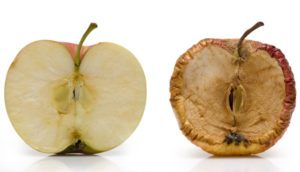 Writers create images with words, and the techniques used are called literary devices. Because of the wide variety of literary devices, we will examine them in groups. In this article, we review the literary devices used to compare and contrast. By comparing and contrasting things, the author invites the reader to see a deeper truth. Use these devices to emphasize an idea, a character, or important moment in the story.
Writers create images with words, and the techniques used are called literary devices. Because of the wide variety of literary devices, we will examine them in groups. In this article, we review the literary devices used to compare and contrast. By comparing and contrasting things, the author invites the reader to see a deeper truth. Use these devices to emphasize an idea, a character, or important moment in the story.
Analogy
An analogy clarifies by comparison. Unlike simile and metaphor, the analogy provides more explanation, often describing the comparison without naming it, revealing it as implied rather than stated. Analogies tend to run longer than other forms of comparison because they go deeper into the characteristics of something, or the heart of an idea or emotion which involves the theme of the story.
“Stinging flames of words blistered their tongues…. Silence was worse. Beneath its slow-burning weight, their black looks singed. After a few days, their minds shriveled into dead coals. Some speechless nights, they lay together like logs turned completely to ash. They were almost afraid to move, lest they sift into flakes and disintegrate.” (Louise Erdrich, winner of the Pulitzer Prize)
“Life’s but a walking shadow, a poor player / That struts and frets his hour upon the stage / And then is heard no more. It is a tale / Told by an idiot, full of sound and fury, / Signifying nothing.” (Macbeth, by William Shakespeare)
Antithesis
Antithesis is contrasting two elements in parallel form.
When the going gets tough, the tough get going.
I’m damned if I do and damned if I don’t.
Setting foot on the moon is one small step for a man and one giant leap for mankind. (Neil Armstrong)
At times Essex thought that Sir Francis Bacon lacked enthusiasm as a friend; Queen Elizabeth thought he lacked loyalty as a subject.
Metaphor
One thing is compared to another different thing by being spoken of as if it were that other thing. A is B. Use a metaphor when:
- You have a lot of ideas that don’t easily fit together
- You want to evoke emotional associations
- You want a strong image to sum up your message
- You want this description to be remembered. Make it clear. Spell out what it stands for. Understand the emotions it arouses. Choose words that refer to both the idea and the image.
The ship plowed the sea.
Love is a battlefield.
“Bolshevism is a ghoul descending from a pile of skulls. It is not policy; it is a disease. It is not a creed; it is a pestilence.” (Winston Churchill)
“Conscience is a man’s compass.” (Vincent Van Gogh)
“Memories are bullets. Some whiz by and only spook you. Others tear you open and leave you in pieces.” (Kill the Dead, by Richard Kadrey)
“Hope is the thing with feathers / That perches in the soul / And sings the tune without words / And never stops at all.” (“Hope Is the Thing With Feathers,” by Emily Dickinson,)
Beware of mixing metaphors within the same paragraph or page in the narrative. These distract the reader from the story. However, if you want to show a character as pompous, or absurd, have the character speak in mixed metaphors. For example: The manager said, “Let’s get our ducks in a row so we’re all on the same page.”
Simile
One thing compared to another dissimilar thing using the words LIKE or AS. The comparison can be between abstract things, such as a sensation, mood, or idea, and something concrete, such as a person or thing. The key to creating a wonderful simile is to form it in the words and attitude of the point of view character, so it showcases the character instead of the author. Search your manuscript for the commonly used similes and create fresh ones in their place.
- He was as smart as a post.
- As dark as the heart of a sociopath.
- The old man got poked and prodded every morning like a piece of meat unearthed from the back of the fridge, suspect until proven otherwise.
- “Life is like riding a bicycle. To keep your balance, you much keep moving.” (Albert Einstein)
- She was as crazy as a bag of cats.
- “Writing a novel is like driving a car at night. You can see only as far as your headlights, but you can make the whole trip that way.” (E.L. Doctorow)
- “I would have given anything for the power to soothe her frail soul, tormenting itself in its invincible ignorance like a small bird beating about the cruel wires of a cage.” (Lord Jim, by Joseph Conrad)
- “They needed only to rise up and shake themselves like a horse shaking off flies.” (1984, by George Orwell)
Resources:
Literary Devices and Writer Unboxed
NOTE: This post was originally published in December 2021 and is our all-time most popular post!

Ronald Tuch
Excellent examples. As useful as the sun rising every morning to shed light on the open grassy fields.
Joni M Fisher
Oh, Ronald, your making me blush. Thank you!
Joni M Fisher
Oh, Ronald, your making me blush. Thank you!